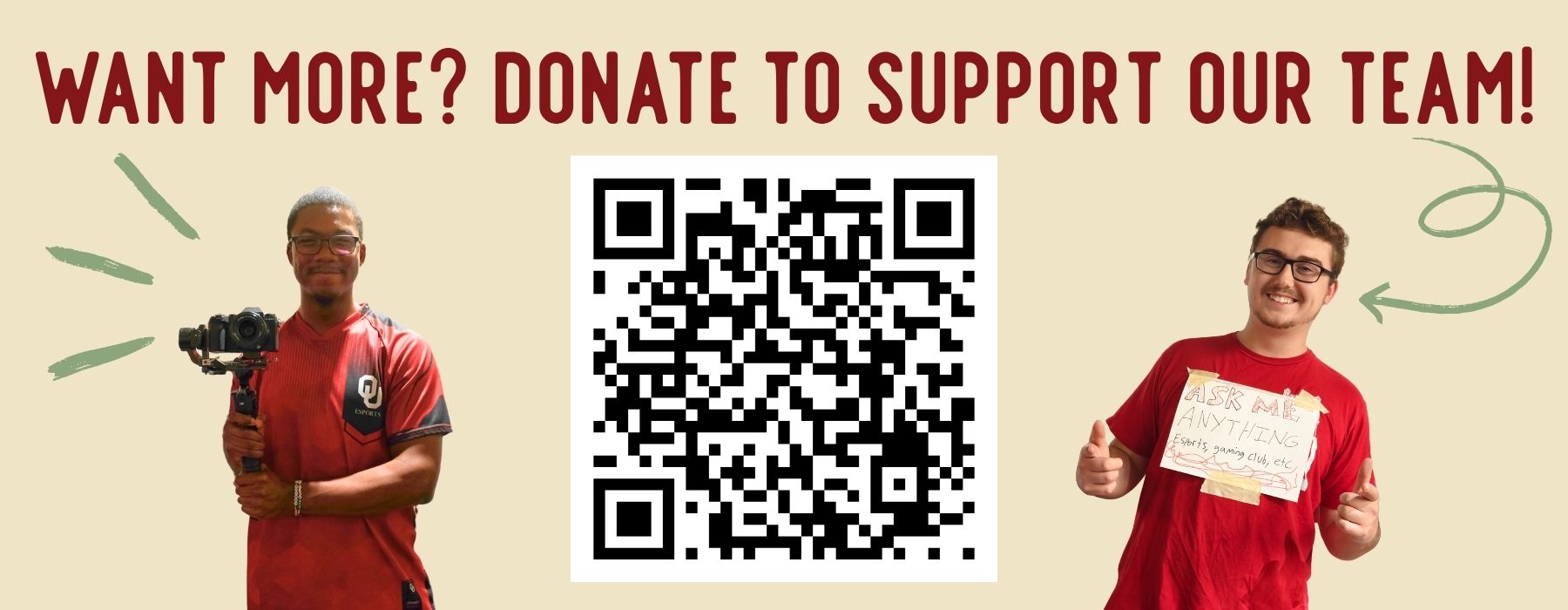This article contains minor spoilers for Bugsnax.
How often do you see yourself reflected in the media you consume? This is not a rhetorical question—I want you to think about it. Often? Occasionally? Of course, most characters will not be an exact match to you (in fact, I would be deeply concerned if they were), but I think most can find at least one quality that makes you say, “Hey, that’s me!”
Now consider that initial question again, but this time, you are queer. Imagine finding some similar qualities in your favorite characters—maybe they are smart, clumsy, or insanely disorganized—but never seeing a core part of yourself represented by any of them.
Unfortunately for some, that is not simply a scenario to imagine.
It is frustrating that even today, in 2025, we still struggle to properly represent queer individuals. Most of the time, queer representation in media is relegated to brief references, jokes (sometimes tasteful), or playing up stereotypes. Rarely do you see a character who is unapologetically queer and simultaneously has other character traits.
Being gay or trans is not an interesting character trait. The best queer characters are charactersfirst and happen to be queer, second. My favorite LGBTQ+ characters in media are the ones with depth who grow and change throughout the story.
Put simply, my favorite queer characters cannot be summed up in one word as “gay,” “trans,” or “queer.”
This is my definition of good representation: when the character is not exclusively defined by their queerness. You could expand this definition to other underrepresented groups, like characters with disabilities (Toph from Avatar: The Last Airbender comes to mind here).
Now, this is not to say that we should completely ignore a character’s queer identity (or leave it entirely up to fandom headcanons), but that depends on the type of story being told.
I appreciate when a character can just be queer and experience an unrelated story because I find that is rarer in media today. It seems like most queer characters’ stories must involve their queerness in some capacity, whether it is their coming-out story, discovery of being queer, or confrontations with others over their identity.
I want to be clear: I think these stories are important and should be conveyed to a larger audience. But do they have to be in every story involving queer people? I find it refreshing when stories depict queer characters, but their identity is not a core aspect of the story being told.
A great example of that is from the game Bugsnax. In Bugsnax, you play as an investigative journalist looking to interview the lead explorer of a mysterious island, Elizabert Megafig (yes, the characters’ names are quite weird). She has discovered a bizarre species of animal plant something that she calls Bugsnax. The Bugsnax are oddly adorable little food items that you can catch and are quite the tasty treat for the townsfolk, as long as you ignore the side effect of characters’ limbs becoming “snackified.”
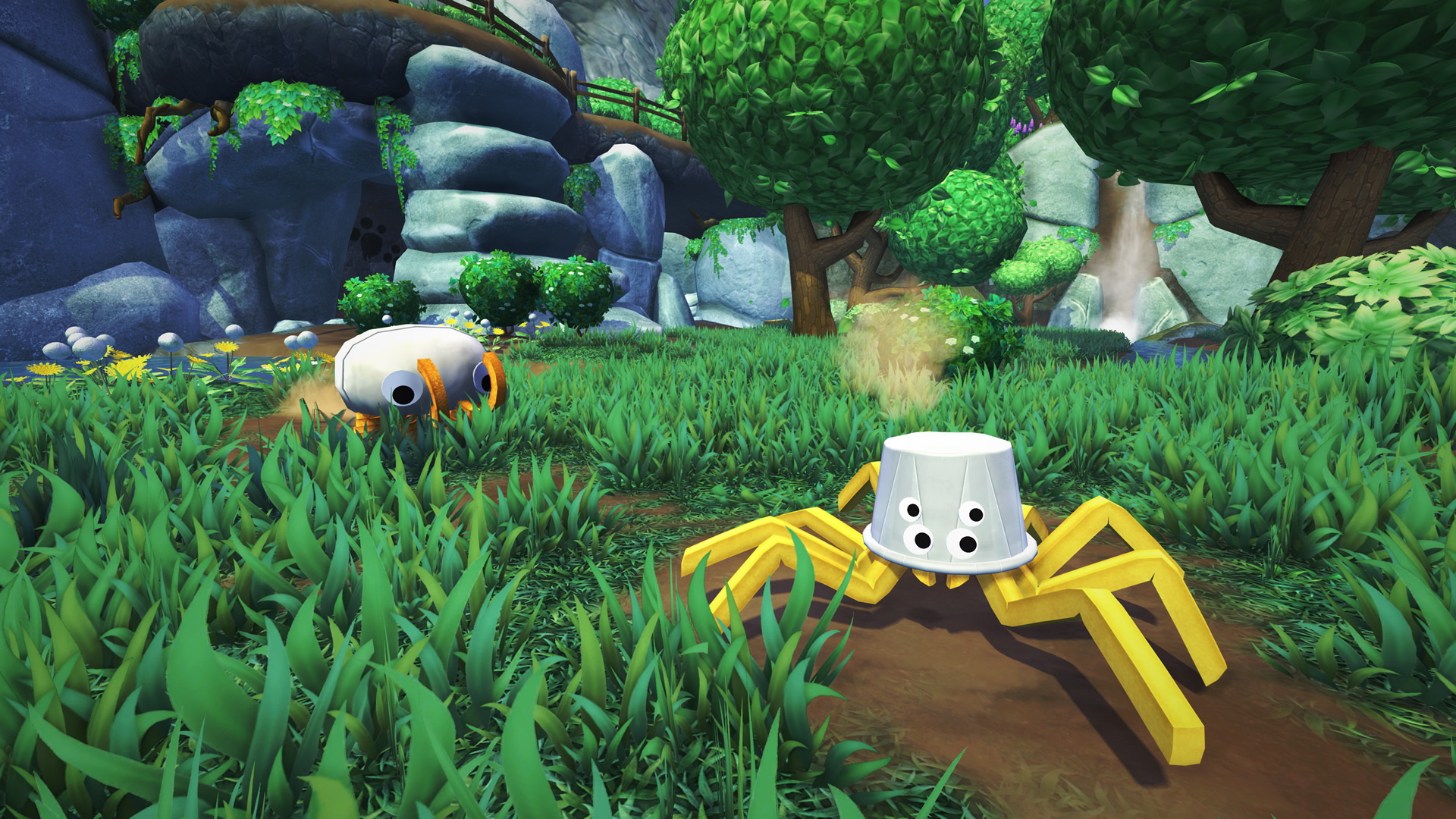
Here are two of the titular Bugsnax: a Bunger (on the left) and a Fryder (on the right).
When you arrive on the island, you discover that Elizabert is missing, and you must find and interview the scattered townsfolk to discover her whereabouts and the truth behind the Bugsnax.
While searching for townsfolk, you eventually run into Chandlo and Snorpy, two “friends” who decided to stick together after the whole town split up. They are quite different, with Chandlo dedicated to weightlifting and fitness and Snorpy afraid to go outside because of the chemtrails and wiretapping, so their friendship is quite perplexing at first.
Through several scenes, we see that Chandlo and Snorpy mean a lot to each other, especially through Chandlo continuing to live outside the town solely because of Snorpy’s social anxiety (despite Chandlo enjoying living in town with the other villagers), and Snorpy’s concern about whether he is the right fit for Chandlo romantically. This culminates in a hilarious moment towards the end of the game where Snorpy finally asks Chandlo to be his boyfriend, and Chandlo explains that they have been dating for several months.
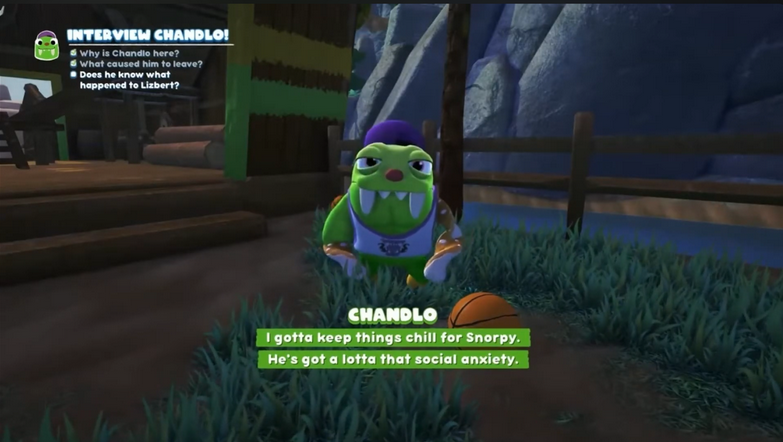
In dialogue, Chandlo discusses his desire to help Snorpy with his anxiety around other townsfolk. This screenshot was taken from the YouTube channel “elliott.”
Up until the climax of the game, Snorpy and Chandlo develop as characters separately from each other. Through some of the optional side quests, you can help Chandlo feel more confident about his physical abilities and how to best support the people he cares about, and you can help Snorpy learn to feel more confident in himself and his own abilities. I love that these characters are more than just their relationship—they have their own thoughts, feelings, and flaws to overcome.
Now, what did that sweet love story have to do with the overarching plot of Bugsnax? Nothing!
It could easily have been removed or replaced with a more traditional heterosexual love story, and the game’s plot would have been the same. This is the type of queer representation we need more of—completely accepted queer characters with interesting quirks and traits.
This representation is unique in other ways and especially how it avoids stereotypes. How often do you see a gay jock character? I love that Chandlo is a fitness fanatic, partially because it is a fun character type, but also because it avoids the common stereotype of gay men being flirtatious and obsessed with beauty.
Snorpy’s character is a bit more unconventional, with him being a hardcore conspiracy theorist, but again, I appreciate that the creators of this game did not make this couple fit into gay stereotypes. It feels like the writers came up with the characters first, then decided to put them into a relationship, not the other way around.
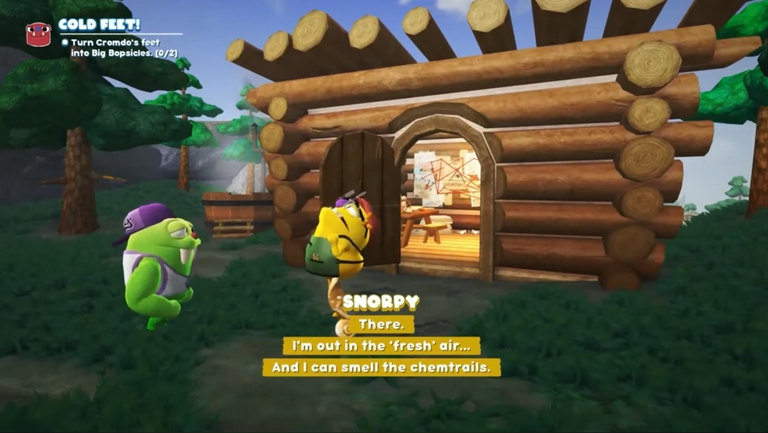
In one of their first cutscenes, Chandlo insists that Snorpy go outside for his health. Snorpy begrudgingly agrees but remains concerned about the chemtrails. This screenshot was taken from the YouTube channel “elliott.”
That being said, I do appreciate that their character arcs help their relationship grow. After showing Chandlo that the people he cares about are capable of helping themselves, and Snorpy that he can be proud of who he is, they both balance each other in their relationship.
Notably, none of the other characters ever has a problem with Snorpy and Chandlo dating. There is also one canonically nonbinary character who uses they/them pronouns, and no one ever has an issue respecting their identity or using the wrong pronouns.
Is this what would happen in the real world? Unfortunately, no, but I argue that fictional worlds should try to represent queerness like this more often. That way, if this is someone’s first time seeing a queer relationship, they are not immediately taught the prejudice around queerness. Plus, sometimes it is nice to momentarily forget that prejudice exists.
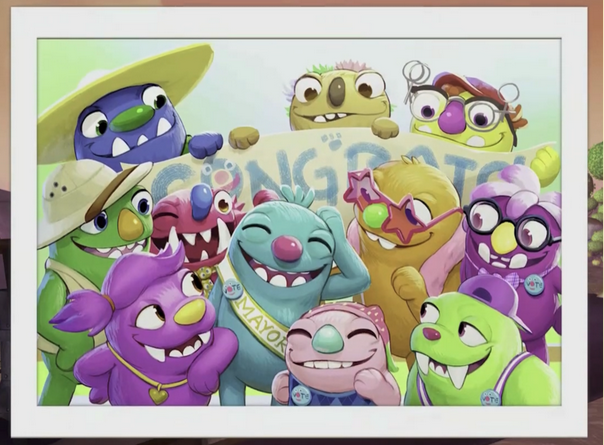
The majority of the Bugsnax cast in a sweet end-credits photo. Screenshot taken from the YouTube channel “Modee.”
Even though Bugsnax is not the most realistic game, it is a great example of how to represent queer individuals in fictional settings. Discussions of prejudice have their place in media, but I feel that media today has become oversaturated with depictions of queer people fighting against discrimination. Sometimes, instead of engaging with very real prejudice presented in a fictional setting, it is nice to be able to play a game or watch a show and see a world where queer people are fully accepted for who they are.
I find the way Bugsnax handles its queer characters incredibly wholesome and refreshing, and I hope to see more games show queer individuals and relationships this way.
